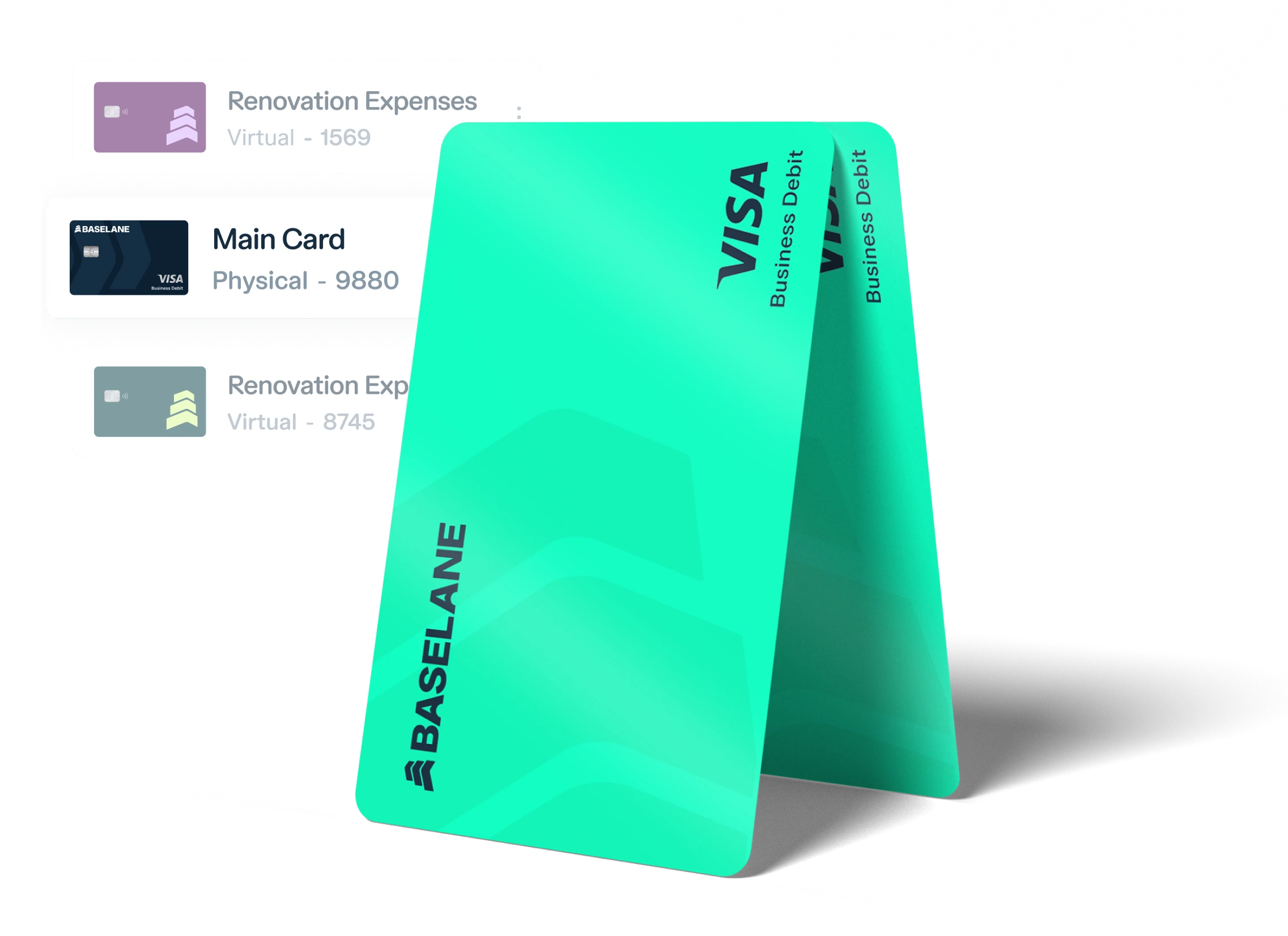Collecting rent manually often involves paper checks, trips to the bank, and uncertain timelines. As a landlord, you need reliable, efficient ways to manage your finances and ensure steady cash flow.
Automated Clearing House (ACH) payments offer a modern alternative that can streamline your rental operations. Understanding how ACH works is key to leveraging its benefits for your real estate business.
Key takeaways
- ACH payments are electronic money transfers processed through the Automated Clearing House network.
- They are commonly used for direct deposit, bill pay, and increasingly, rent collection.
- ACH Debits, initiated by the landlord or platform with tenant authorization, are typical for rent payments.
- Benefits for landlords include lower costs compared to credit cards, increased automation, and improved cash flow predictability.
- While processing takes 1-3 business days, ACH offers high reliability and reduced risk compared to traditional checks.
What is an ACH payment?
An ACH payment is a type of electronic money transfer facilitated by the Automated Clearing House network in the United States. This network connects US bank accounts and enables funds to move between them digitally. ACH payments are a cornerstone of modern digital finance.
The Automated Clearing House payment system is governed by Nacha, an organization that establishes the rules and regulations for secure and effective transactions within the network. This ensures that transfers are processed consistently and securely across participating banks.
ACH credits vs. ACH debits: Which is used for rent?
There are two primary types of ACH transactions: ACH Credits and ACH Debits. The distinction is important for understanding how rent is typically collected electronically.
ACH Credits involve money being “pushed” from one bank account to another. A common example is an employer sending payroll directly to an employee’s bank account.
ACH Debits involve money being “pulled” from one bank account with proper authorization from the account holder. This method is frequently used for recurring bill payments initiated by the biller, such as utility bills or loan payments. For rent collection initiated by a landlord or a rent payment platform, ACH Debit is the most common method. You can use various rent collection apps to manage these types of transactions efficiently.
How ACH payments work in practice for rent collection
Using ACH for rent collection simplifies the process compared to paper checks. It begins with the tenant providing their bank account and routing number and authorizing the landlord or property management platform to initiate payment requests. This authorization allows the landlord or platform to electronically “pull” the rent amount from the tenant’s account on the due date. Setting up a dedicated bank account for rental property is crucial for managing these incoming payments.
Once initiated, the payment request enters the ACH network. Funds are transferred electronically between the tenant’s bank and the landlord’s bank, typically through a payment processor or rent collection software. While not instant, this electronic flow is more predictable and trackable than mailing a check.
Benefits of using ACH for rent collection
Adopting ACH for rent collection offers several significant advantages for landlords and property managers. These benefits contribute to saving time, gaining financial clarity, and helping you grow your rental property business.
One major benefit is cost-effectiveness compared to other digital methods. Credit card processing fees can range from 1.3% to 3.5% or more per transaction, which can add up significantly on large rent payments. ACH transaction costs for businesses are much lower, often ranging from $0.20 to $1.50 per transaction, with median internal costs reported around $0.29 per transaction.
While property managers might factor payment processing costs into their fees, using cost-efficient methods like ACH can help optimize these expenses, especially when incoming rent is auto-routed to a virtual wallet savings account.
Speed and reliability are also key advantages. Unlike checks that can be delayed in the mail or lost, ACH transfers move electronically through a secure network. While processing takes 1-3 business days, the process is predictable and less prone to manual errors or external factors. This improved reliability contributes to more stable cash flow.
ACH enables the automation of recurring rent payments. Once authorized, tenants can set up automatic payments, ensuring rent is paid on time each month without manual effort from either party. This automation significantly reduces the administrative burden for landlords, freeing up time previously spent chasing payments or depositing checks.
Furthermore, ACH offers enhanced security compared to checks, which contain sensitive bank information that could be intercepted. Electronic transfers are tracked and processed through secure channels, reducing the risk of fraud or loss associated with paper payments. Bank accounts used for ACH transfers also tend to be more stable than credit cards, which can expire, leading to fewer payment failures over time.
Potential drawbacks and limitations of ACH payments
While ACH offers many benefits, it’s important for landlords to be aware of potential limitations. Unlike immediate payment methods, ACH transfers are not instant.
Standard ACH processing typically takes 1 to 3 business days for funds to settle in the recipient’s account. While same-day ACH is available, it often comes with a premium fee, which may not be cost-effective for routine rent collection. This delay means landlords won’t have immediate access to funds upon initiation.
Another consideration is the possibility of returned payments. ACH transactions can be returned for various reasons, such as insufficient funds (NSF), incorrect account details, or unauthorized transactions. If a payment is returned, the landlord may incur a return fee and must then pursue the payment via an alternative method. Properly securing tenant authorization helps mitigate the risk of unauthorized returns.
Some platforms or banks may also impose transaction limits on ACH transfers, either per transaction or daily/monthly. Landlords with very high-value properties or a large number of units might need to confirm these limits with their service provider.
ACH costs and fees for landlords
Understanding the fee structure is crucial when considering ACH for your rental business. Generally, ACH processing is one of the most cost-effective digital payment methods available to businesses, including landlords.
The typical fee structure for ACH payments involves a low flat fee per transaction or a very small percentage, much lower than credit card fees. Fees for small businesses generally fall in the range of $0.20 to $1.50 per transaction. While traditional banks might charge specific fees for ACH services, modern rent collection platforms often bundle these costs into their service fees or charge a low per-transaction fee, making it more predictable for landlords.
The question of who pays the fees can vary depending on the service provider and the agreement between the landlord and tenant. Often, the cost is absorbed by the landlord or the payment processing platform as part of the service offered. Some platforms may offer the option to pass on a small transaction fee to the tenant, especially for non-ACH methods like card payments. Regardless of who ultimately pays, the cost is significantly lower than credit card alternatives.
Integrated platforms like Baselane incorporate rent collection features that leverage ACH processing. This allows landlords to manage rent collection with minimal fees, integrating payments directly with their banking and bookkeeping, further reducing overall costs and complexity.
ACH vs. other rent payment methods
Comparing ACH to other common methods highlights why it’s increasingly preferred for rent collection. Landlords and tenants have several options when it comes to paying rent. Each method has its own set of advantages and disadvantages regarding cost, speed, convenience, and reliability
| Feature | ACH | Credit Card | Paper Check | Cash/Other Manual |
|---|---|---|---|---|
| Cost to Landlord | Low (typically $0.20 - $1.50 per transaction) | High (2–3% + fees per transaction) | Moderate (checks, postage, bank fees, labor) | Low direct cost, high indirect cost (time, risk) |
| Speed of Funds | 1–3 business days (same-day possible) | Usually 1–2 business days | Varies (mailing time + bank clearing) | Instant (cash), varies (other) |
| Convenience for Tenant | High (automatic setup possible) | High (familiar, rewards possible) | Low (manual writing, mailing/delivery) | Varies (requires physical exchange) |
| Convenience for Landlord | High (automated collection via software) | High (automated collection via software) | Low (manual collection, deposit, tracking) | Very low (manual handling, high risk) |
| Security | High (electronic, tracked) | High (fraud protection) | Low (risk of loss, theft, fraud) | Very low (risk of loss, theft) |
| Automation | High (recurring payments possible) | High (recurring payments possible) | None | None |
While nearly half of renters have historically paid by check, digital methods are gaining ground. ACH offers a middle ground between the speed and convenience of credit cards and the low cost and reliability of electronic transfers. It avoids the risks and administrative hassle of manual methods like checks or cash.
Comparing ACH to checks, ACH significantly reduces the chance of lost payments or fraud inherent in paper transactions. It also eliminates the need for manual deposits. When considering whether rent is considered late, an ACH payment initiated on the due date typically avoids late fees. In contrast, a check might be delayed by mail time or bank processing. Prorating rent using methods can be set up within systems that support ACH.
Compared to credit cards, ACH offers substantial cost savings for the landlord. While credit cards offer immediate payment confirmation and rewards for tenants, the high processing fees make them less attractive for the larger transaction amounts typically associated with rent payments. ACH debit transactions are generally preferred for rent initiated by the landlord.
Wire transfers are faster than ACH, often settling within hours, but they are typically more expensive and less suitable for routine, recurring payments like rent. P2P apps (like Venmo, Zelle) are convenient for individuals but may lack the business features, tracking, and formal authorization processes required for professional rent collection. Modern rent collection platforms solve this by integrating ACH directly into their system.
Getting started with ACH rent collection
Implementing ACH for rent collection is straightforward, typically requiring the use of property management software or a dedicated rent payment processor. These platforms handle the technical details of connecting to the ACH network and complying with Nacha rules. The most critical step for landlords is obtaining proper authorization from tenants to initiate ACH debits from their bank accounts.
Many platforms provide a secure tenant portal where renters can easily enter their banking information and grant authorization electronically. This simplifies the setup process for both parties. Once authorization is complete, the landlord can schedule recurring ACH payments according to the lease agreement.
Platforms like Baselane provide integrated rent collection tools powered by ACH. This allows landlords to automate invoicing, receive payments directly into their accounts, and automatically tag income for bookkeeping purposes. It consolidates financial tasks, saving time and improving accuracy.
Bottomline
For landlords seeking to modernize their operations, understanding “what is an ACH payment” is a vital first step. ACH transfers offer a cost-effective, reliable, and automated method for collecting rent, providing significant advantages over traditional paper checks and even costlier digital options like credit cards.
By leveraging the power of the ACH network through dedicated rent collection platforms, you can reduce administrative burden, improve cash flow predictability, and gain greater control over your rental property finances.
Adopting ACH for rent collection means spending less time on manual tasks and more time focusing on optimizing your investments, whether you follow the [brrrr method] or other strategies. Platforms designed for landlords, like Baselane, integrate ACH rent collection directly with banking and bookkeeping, offering a unified solution to streamline your entire financial workflow. Take back time, gain clarity, and grow your passive income by embracing modern payment solutions like ACH.
FAQs
For landlords, an ACH payment is an electronic rent payment processed directly between a tenant's bank account and the landlord's bank account via the secure Automated Clearing House network. It allows landlords to collect rent digitally without needing paper checks.
Standard ACH transfers typically take 1 to 3 business days to clear and for funds to become available in the landlord's account. Some platforms may offer faster processing options, but standard times apply to the ACH network itself.
Yes, ACH transactions are processed through a secure, regulated network governed by Nacha rules. While there's a risk of unauthorized transactions if proper authorization isn't obtained, the electronic process reduces the security risks associated with handling paper checks.
Yes, there are typically low transaction fees associated with ACH processing, usually much less than credit card fees. These fees are often covered by the landlord or the rent collection platform, though some platforms may pass on a small fee to the tenant.
To set up ACH rent collection, you typically need the tenant's bank name, account number, and routing number. Most modern platforms require the tenant to securely enter this information and provide electronic authorization.








